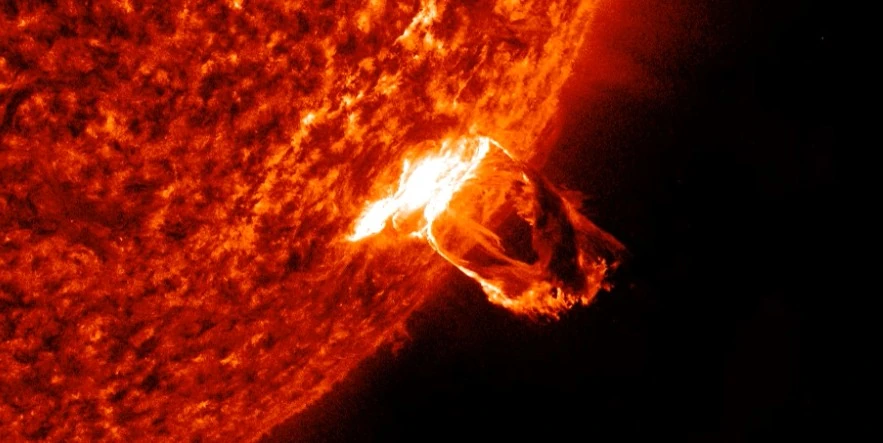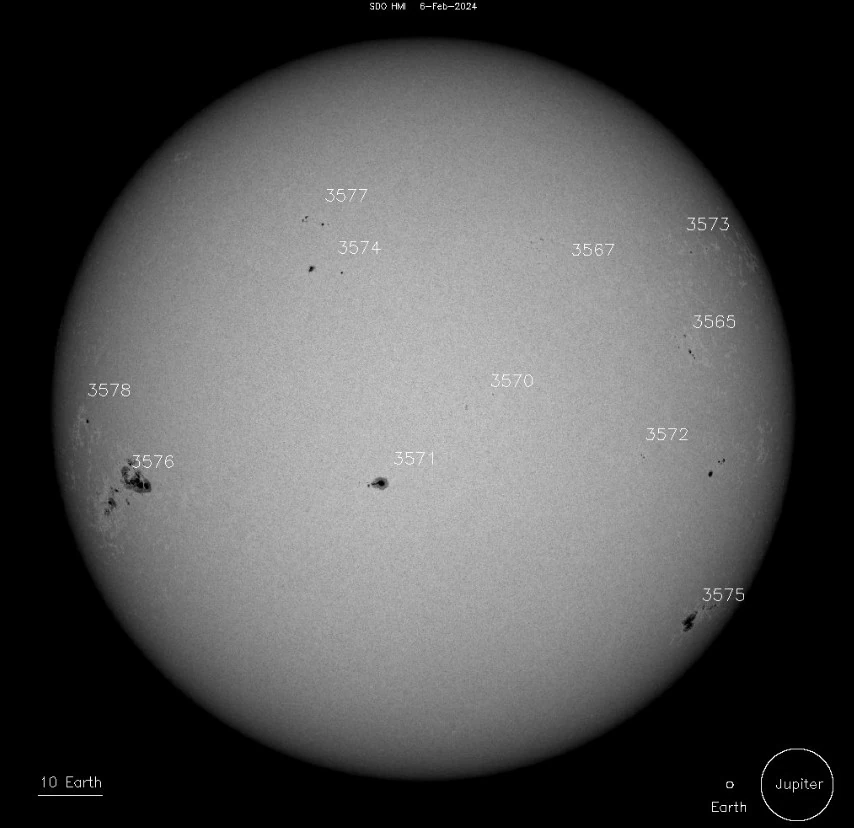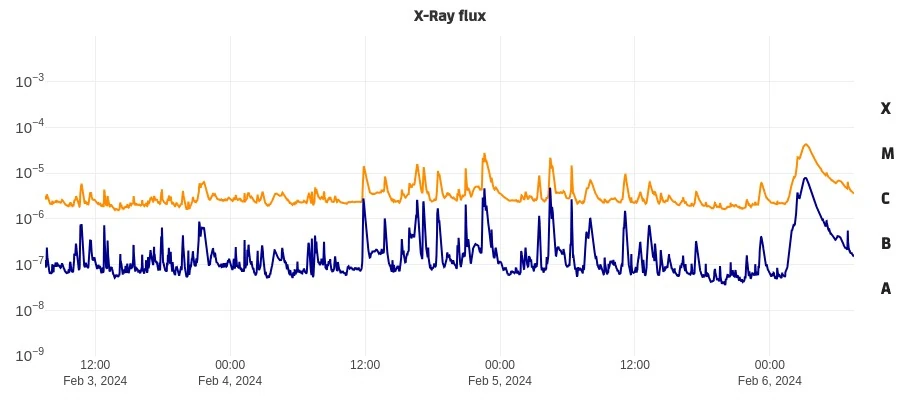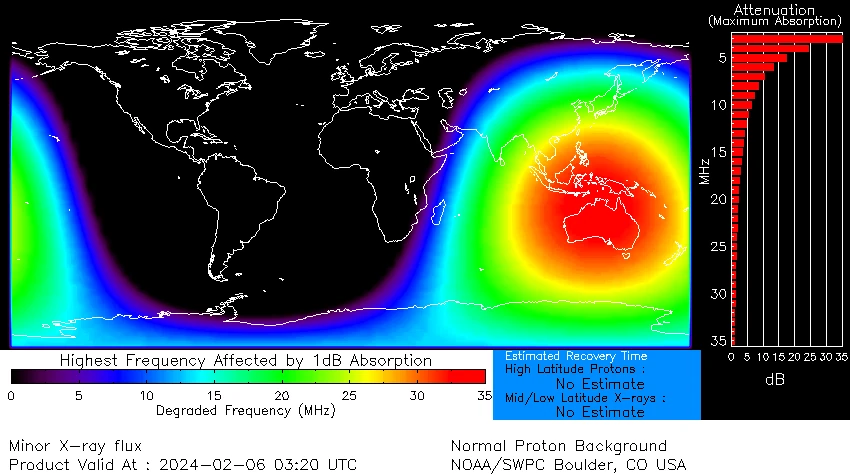Long-duration M4.2 solar flare erupts from Region 3575

A long-duration M4.2 solar flare erupted from Active Region 3575 at 03:12 UTC on February 6, 2024. The event started at 02:37 UTC and ended at 03:37.
Type II and IV radio emissions were associated with the event, indicating a strong coronal mass ejection was produced.
Additionally, a 10cm Radio Burst (tenflare), with a peak flux of 470 sfu and lasting 20 minutes, was also associated with the event. A 10cm radio burst indicates that the electromagnetic burst associated with a solar flare at the 10cm wavelength was double or greater than the initial 10cm radio background. This can be indicative of significant radio noise in association with a solar flare. This noise is generally short-lived but can cause interference for sensitive receivers including radar, GPS, and satellite communications.
The location of this region (near the SW limb) does not favor Earth-directed CMEs.




Radio frequencies were forecast to be most degraded over Australia and SE Asia at the time of the flare.


Between 11:53 UTC on February 4 and 03:12 UTC today, a total of 11 M-class flares were detected. Today’s M4.2 is the strongest one:
| M4.2 | 03:12 UTC on February 6 |
|---|---|
| M2.2 | 02:28 UTC on February 6 |
| M1.4 | 06:22 UTC on February 5 |
| M2.1 | 04:28 UTC on February 5 |
| M2.7 | 22:37 UTC on February 4 |
| M2.1 | 22:28 UTC on February 4 |
| M1.2 | 20:57 UTC on February 4 |
| M1.1 | 18:29 UTC on February 4 |
| M1.3 | 17:12 UTC on February 4 |
| M1.5 | 16:38 UTC on February 4 |
| M1.4 | 11:53 UTC on February 4 |
Solar activity will likely continue at moderate levels with occasional M-class flares (R1-2/Minor-Moderate Radio Blackouts), and a chance for an isolated X-class flare (R3 Strong Radio Blackout) through February 7. Probabilities will decrease somewhat to a chance for M-class flares, and a slight chance for an isolated X-class flare event, on February 8 as AR 3575 exits the southwestern limb.
Solar wind parameters were mildly enhanced in 24 hours to 00:30 UTC today, likely due to periphery-like CME and positive polarity coronal hole high speed stream (CH HSS) influences. The total field increased from 6 nT to 11 nT, but the Bz component was mostly northward or near neutral. Solar wind speeds increased from 350 – 400 km/s to ~440 km/s. Phi was predominantly positive.
The geomagnetic field is expected to be at quiet to unsettled levels today as positive polarity CH HSS and glancing CME effects wane. Primarily quiet conditions are expected on February 7 and 8.
References:
1 Forecast Discussion – Issued: 2024 Feb 06 0030 UTC – Prepared by the U.S. Dept. of Commerce, NOAA, Space Weather Prediction Center
Featured image credit: NASA/SDO AIA 304, Helioviewer, The Watchers


Commenting rules and guidelines
We value the thoughts and opinions of our readers and welcome healthy discussions on our website. In order to maintain a respectful and positive community, we ask that all commenters follow these rules.